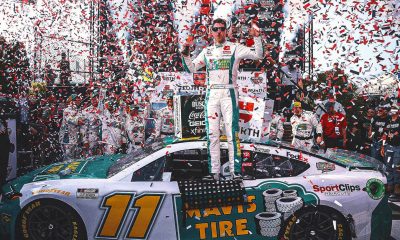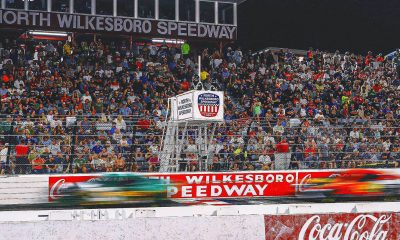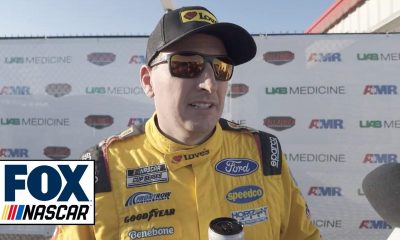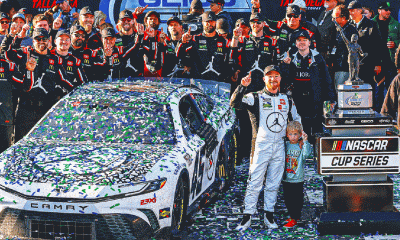Navigating record rainfall under clouds of doubt, the inaugural NASCAR Chicago Street Race drew more than 47,000 unique attendees and generated nearly $109 million in economic impact during July Fourth weekend, a study released Wednesday by Choose Chicago shows.While falling just short of projections, the return on investment proved enough for Chicago to commit to a second race next summer, with NASCAR agreeing to a shorter setup and teardown window to minimize disruption, the city said Wednesday. NASCAR included the Chicago Street Race on its just-released 2024 schedule, with the Grant Park 220 slated for Sunday, July 7.During a post-City Council meeting news conference Wednesday, Mayor Brandon Johnson celebrated the deal and said NASCAR must reduce the setup by four days and the teardown by two days, as well as “commit to additional resources” on public safety and other costs.Julie Giese, president of the Chicago Street Race, said NASCAR is prepared to reduce the setup and teardown schedule, which disrupted the normal flow of traffic in and around Grant Park for weeks surrounding the event.“A lot of it is just learning from the first year … being able to compress that schedule from a street closure perspective, as well as trying to tighten up that park build schedule,” Giese said. “We feel very confident that we can trim several days off of that schedule.”The rain-shortened Grant Park 220, a televised Cup Series race July 2, featured a 12-turn, 2.2-mile course, with NASCAR drivers navigating flooded streets lined with temporary fences, grandstands and hospitality suites. The Xfinity Series race on July 1 was also curtailed and concerts scheduled for Sunday were canceled due to the record rainfall.The pop-up course traversed stretches of DuSable Lake Shore Drive and South Michigan Avenue, shutting down wide swaths of the city’s lakefront. But the event also produced significant tourism dollars and media value for the city, according to the economic impact report, which was conducted by Temple University’s Sport Industry Research Center for Choose Chicago, the city’s tourism arm.The study found the two-day event drew 79,299 attendees, falling short of a NASCAR-commissioned study last fall, which projected 100,000 attendees during July Fourth weekend. The totals included 47,405 unique attendees, most of whom went to events on both days. About half of the attendees were nonlocals who traveled to Chicago specifically for the race, according to the report.Attendees came from 15 countries and all 50 states. The largest contingent of international visitors hailed from Canada, followed by the United Kingdom, Mexico and France. Based on a sample of about 3,000 nonlocal attendees, 85% of Chicago racegoers were white and nearly 7 out of 10 were male, according to the study. Nearly half of the attendees were between the ages of 45 and 64.The 24,781 out-of-town attendees spent about $685 per day in Chicago and booked 23,315 room nights in area hotels, according to the study. NASCAR had projected 24,000 hotel room nights in Chicago.The study said the event supported 750 jobs and generated $8.3 million in local and state taxes, both numbers falling slightly below NASCAR projections of 850 jobs and $8.9 million in tax revenue.The event generated $63.6 million in direct impact for Chicago, which expanded to include indirect and induced effects brings the total economic impact to $108.9 million. The report defines indirect impact as new money injected into Chicago that is then re-spent locally. Induced impact represents “changes in household-level spending that result from the initial direct effect spending and subsequent indirect effect spending of these dollars in Chicago.”The $108.9 million in economic impact fell just below the NASCAR-projected total of $113.8 million.Allen Sanderson, a University of Chicago sports economist, said the actual economic impact is likely significantly lower than $108.9 million. Beyond questioning the methodology, he said the study doesn’t reflect costs to the city of putting on the event, and the revenue that will be lost by the disruption of the event.“You need to ask what is the cost in terms of inconvenience, not being able to get to work or whatever, for not only a three-day period, but a three-week period when they’re building the grandstands and then tearing them down,” Sanderson said.For the inaugural event, barrier installation began on June 17 and the last barrier was removed by July 15. NASCAR was installing the last of the 2,200 concrete barriers lining the perimeter of the racecourse on a closed stretch of South Michigan Avenue hours before the first race. This year, NASCAR will have to accelerate the process to meet a tighter city window, in a bid to reduce the disruption.In addition to $108.9 million in economic impact, the Chicago Street Race generated $23.6 million in media exposure for the city, according to the study.The four-hour Grant Park 220 broadcast on NBC averaged nearly 4.8 million viewers, making it the network’s most-watched Cup Series race in six years, according to Nielsen. The economic impact study pegged the value of that broadcast at $10.2 million, with social media, print and digital coverage, and other platforms making up the rest of the $23.6 million in media value.In 2024, the Saturday Xfinity Series race will also be broadcast on NBC, increasing the media exposure for Chicago, Giese said.A signature initiative of former Mayor Lori Lightfoot, the race faced an uncertain future under the new mayoral administration and remained in doubt until Wednesday.Under the terms of the three-year deal to transform the Grant Park environs into a temporary racecourse, NASCAR agreed to pay the Chicago Park District a $500,000 permit fee this year, $550,000 in 2024 and $605,000 in 2025, with an option to renew for two years. Both NASCAR and the Park District have the option to terminate the agreement for convenience — with no penalty — by providing written notice at least 180 days before the next event.With Wednesday’s announcements by NASCAR and the city, year two has gotten the green light — with a few concessions by NASCAR.In addition to compressing the setup and teardown time, NASCAR has agreed to address “costs incurred by the city in and around the event,” Giese said.On Wednesday, mayoral adviser Jason Lee told reporters the new agreement compels NASCAR to reimburse the city for police overtime and other government personnel costs related to the event. He did not specify how much that number was for this year, but said it was “well over $1 million.”DuSable Lake Shore Drive will remain closed during event preparation, Lee said, but the administration has hopes the event can become an annual tradition such as Lollapalooza.“If it does, people will deal with the inconvenience,” Lee said. “But the main thing we wanted to make sure is that the taxpayers of Chicago are not subsidizing this event.”[email protected]@chicagotribune.com
Read More












